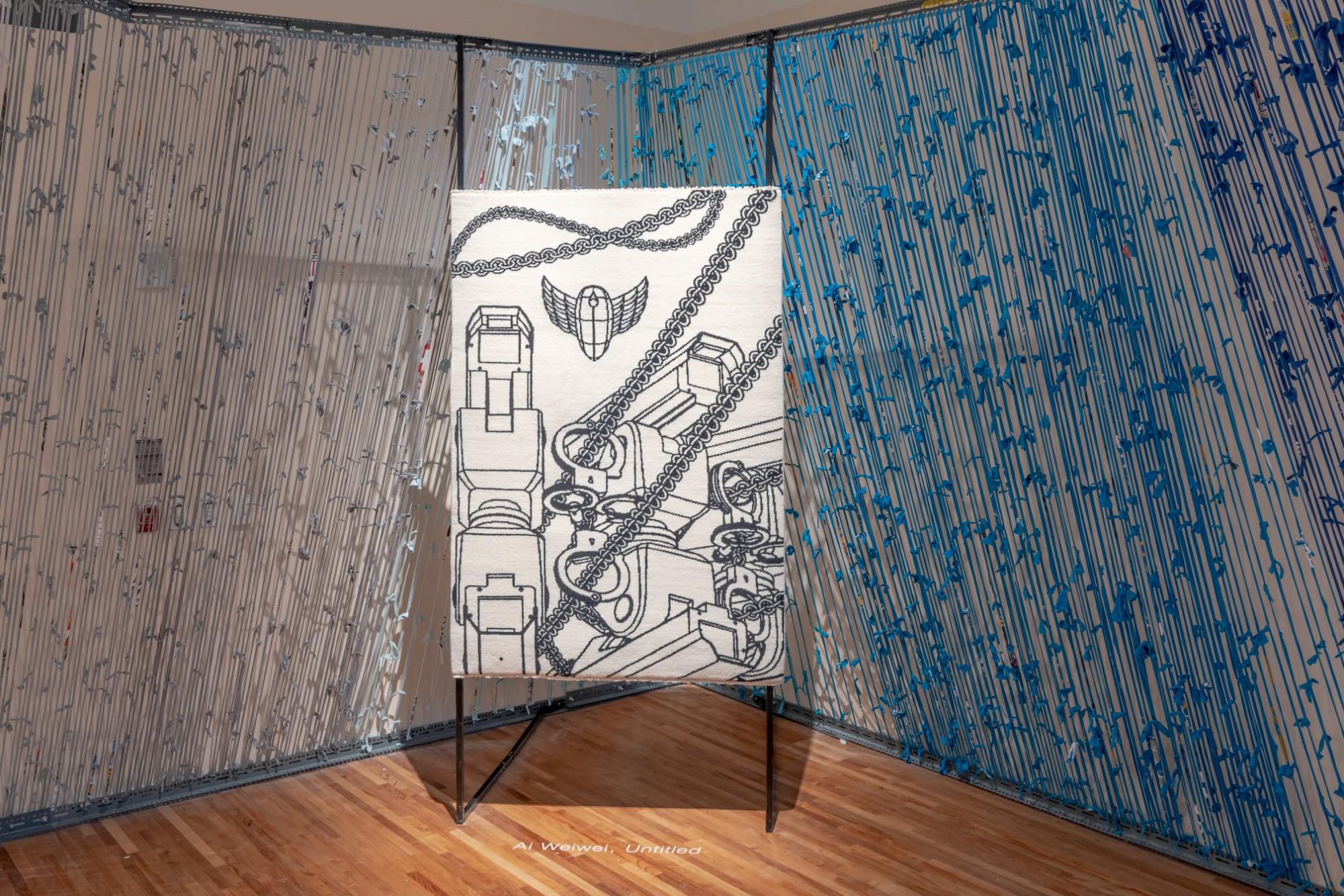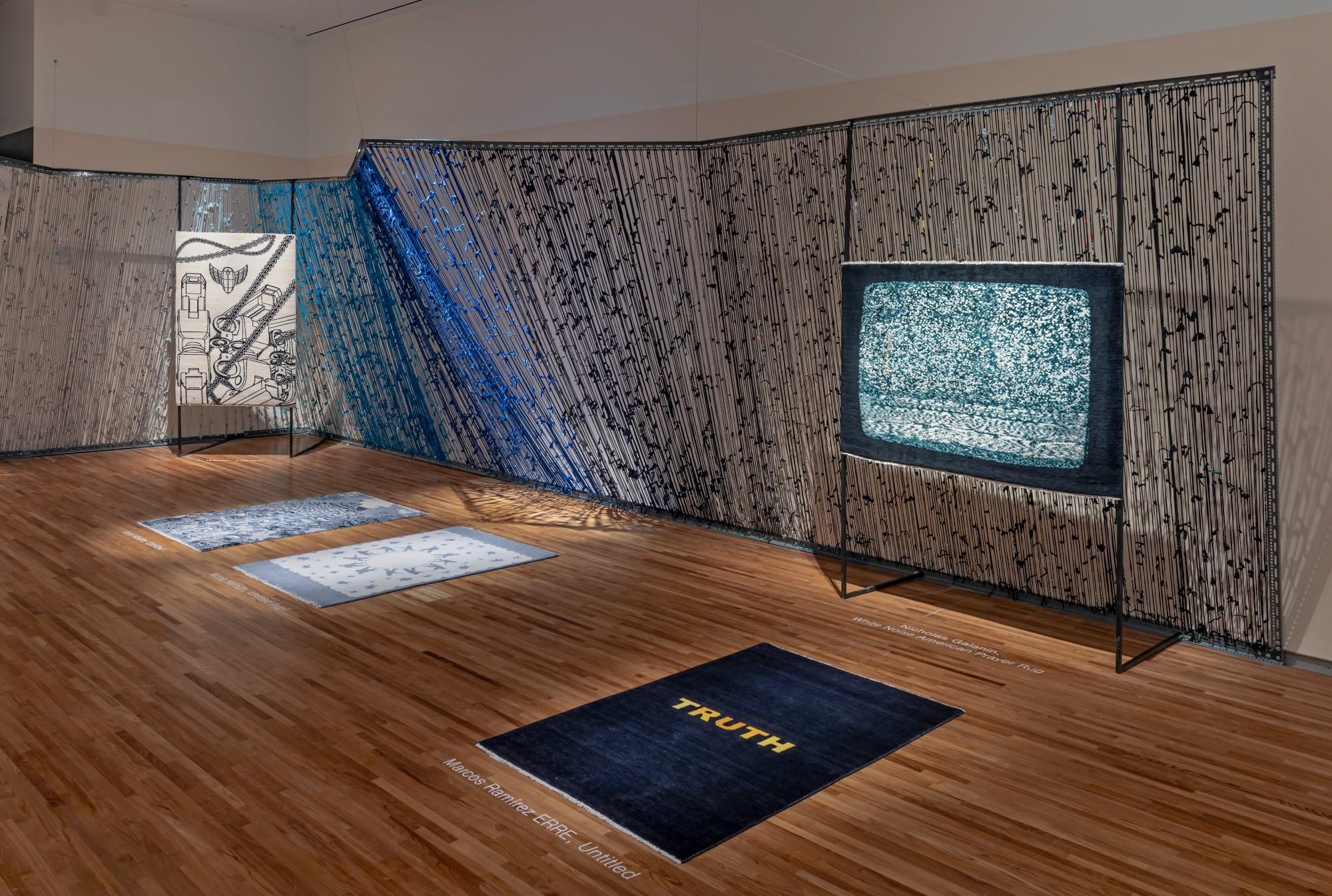Each of the thirty-six contemporary artists who contributed their works address the foundational question of what a sanctuary is in 2020. In much of the world, carpets are personal furnishings used for prayer, comfort, warmth, and as anchoring devices. The theme of connectedness despite religious, ethnic, political, and physical separation runs through the entire exhibition—from the rugs on display, to the installation supports, to the ambiance and international contributors. Artists submitted designs for their rugs to be translated to wool by weavers in Lahore, Pakistan. The resulting pieces are as varied as one might expect works in any other medium from artists as diverse as Mona Hatoum, Ai Weiwei, and Hank Willis Thomas to be. But the fact that all pieces are presented in a consistent carpet medium suggests connection.
The carpets are arranged in warmly-lit alcoves around the exhibition space. Some rest on the floor and others hang vertically, but all require viewers to approach them closely and from multiple angles. Viewers are invited to engage with the exhibition in a multisensory way, almost as if moving through a quiet private home filled with personal, well-used artifacts arranged in enclosed rooms. The exhibition’s layout manages to be at once rich in content and materials, yet intimate and introspective.




























